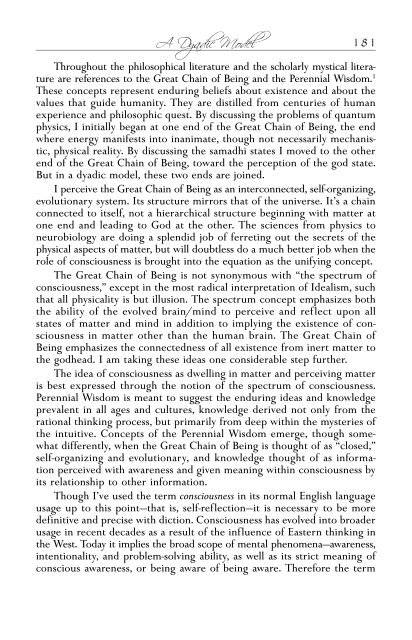edgar-mitchell
edgar-mitchell
edgar-mitchell
Create successful ePaper yourself
Turn your PDF publications into a flip-book with our unique Google optimized e-Paper software.
Down and In 91<br />
financial empire was in disarray; they told me their parent company had<br />
unexpectedly declared bankruptcy, and the funding they had promised<br />
was now out of the question. The institute had just opened its doors and its<br />
primary source of financial support was lost.<br />
It was during these trying years that I picked up a new dictum: trust<br />
the process. Funding, I would learn, was always going to be a problem. But<br />
this was no reason to give up. With faith and perseverance the means<br />
would always come together so that we could take the next step. The<br />
institute’s nascent years proved humble enough, as it was staffed primarily<br />
by myself, Anita Rettig, part-time employees, and devoted volunteers. Anita<br />
and I had begun dating after Louise and I had parted, and we both were<br />
devoted to the project.<br />
This was a restless time, and in its own way, a romantic time. The days<br />
were fueled by a kind of idealism that propelled us into a vast unknown.<br />
To pay the bills we incurred and the small payroll, the institute was funded<br />
by whatever I could garner in lecture fees and the occasional donation of<br />
one or two thousand dollars by interested parties. Gradually a number of<br />
individuals were gathered to form the nucleus for a board of directors and<br />
a professional staff, and more projects were undertaken. All the while,<br />
Anita and I improvised. Anita had a gift for public relations, navigating<br />
those tricky waters of the media, and managed to find television and newspaper<br />
coverage for the institute, which eventually would translate into<br />
revenue. The donations the institute received in the beginning usually<br />
amounted to less than a quarter of what was needed each month, but in<br />
those early days, when it was essentially just Anita, myself, and a minimal<br />
staff, we seemed to be touched by an occasional miracle.<br />
One rainy morning, a battered Volkswagen microbus pulled up before<br />
the plate glass windows of the office. A young lady in her early 20s came<br />
to the door and asked about the institute—what we were setting out to<br />
accomplish, how we were going to accomplish it, and why. We talked for<br />
a few hours, and as she got up to leave she asked if I would autograph a<br />
photo for her child. As I did so, she wrote out a check, handed it to me,<br />
and was gone as suddenly as she appeared. Once the microbus had pulled<br />
away, I glanced at the check and saw that it was written out for $25,000.<br />
Months later we learned that she was an heiress who wanted her money to<br />
go to worthy and humanitarian causes (this was the early 1970s, after all).<br />
Ours, she was sure, was such a cause. Such synchronicities allowed us to<br />
keep going.<br />
But we didn’t always have to rely on miracles. There were other resources<br />
to be drawn upon. In the fall, after opening our doors, I contacted<br />
Wernher von Braun, who was still working in the private sector, and asked<br />
if he would speak at a fund-raising dinner for the institute in San Francisco.<br />
There would be a host of other speakers, but he would be the keynote. He


